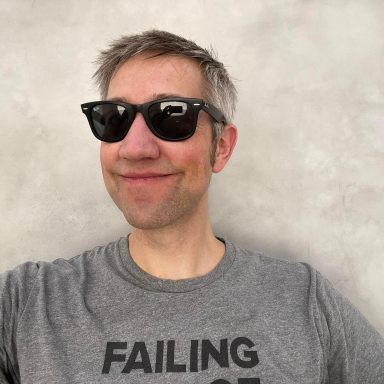10 Horror Tropes the ‘Star Wars’ Universe Relies On
Every one of the original three Star Wars movies has an extremity being cut off with a lightsaber.

Star Wars is, fundamentally, space opera: blending elements of science fiction and fantasy. That said, the movies and shows have never shied away from horror tropes.
There are places Star Wars won’t go: there’s very little blood to be seen, and only the faintest suggestion of sexual assault. Within the franchise’s PG to PG-13 universe, though, there are wells of horror it returns to again and again.
Dismemberment

We’ve got to start here. Every one of the original three Star Wars movies has an extremity being cut off with a lightsaber. The Empire Strikes Back (1980) earns special honors in this department, with Luke first disarming a wampa ice creature and then having his own hand chopped off by Darth Vader. It went without saying that Vader’s origin story, explored in the prequels, would turn on the loss of multiple limbs.
Conveniently, technology a long time ago in a galaxy far, far away was advanced enough to readily fashion artificial limbs indistinguishable from the originals. The replacements were much remarked upon, though, and the metaphorical association of prosthetics with moral corruption was an explicit theme of the Lucas-era films. In the original Star Wars mythos, you weren’t just losing a hand: you were losing a piece of your soul.
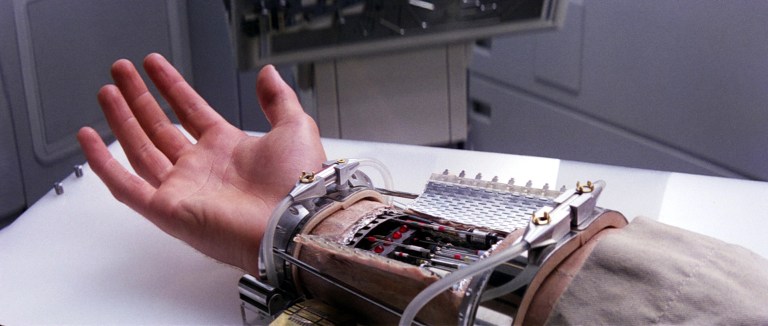
Disney-era Star Wars content has been trying to undo some of that damage with positive portrayals of mechanically enhanced characters. Awkward though the hot-rodding Mods in The Book of Boba Fett might have been, disability advocates voiced appreciation for those characters being at least a step towards the light.
Creature attacks
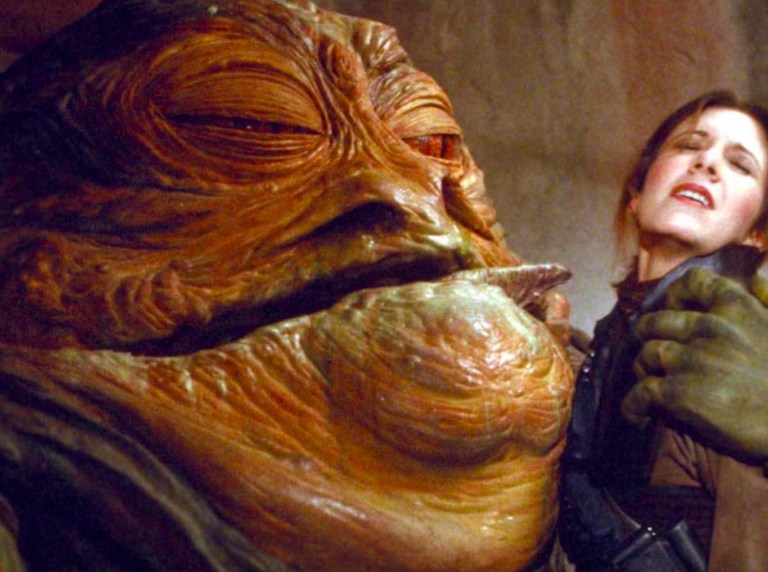
Star Wars aliens pretty much fall into two categories: (a) intelligent humanoids with creative anatomy, and (b) hideous beasts that want to eat you. The former often play heroic roles, exemplifying the good guys’ refusal to discriminate by species. The latter are usually either outright evil or, at least, nasty enough for the good guys to slay without having to feel guilty about it.
Creature attacks are among the most common action beats in Star Wars. In the original trilogy alone, there’s the trash compactor monster (a.k.a. the dianoga), the snow creature (a wampa), the flying space eels (mynocks), and Jabba’s pet carnivore (the Rancor). The prequels added the monsters in the Geonosis arena, the deadly bugs that crawl into Senator Amidala’s bed, and more. With the sequels came Han Solo’s smuggled rathtars and a misunderstood vexis.
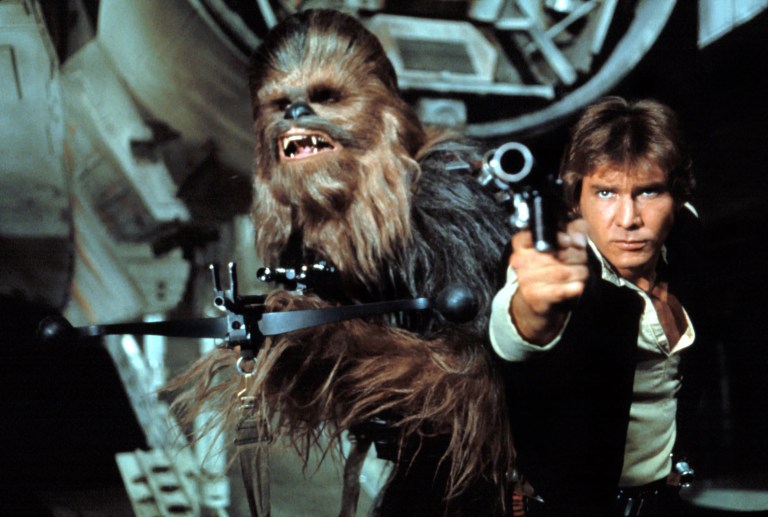
Then there are the classic character moments when seemingly sympathetic aliens let loose with their animal instincts: Chewbacca ripping the arms off a Pyke sentinel (Solo: A Star Wars Story), the Ewoks trying to roast their eventual allies (Return of the Jedi), Grogu chowing down on the Frog Lady’s babies (The Mandalorian).
Disfigurement

Eyes may be windows to the soul, but in Star Wars the window dressing counts for a lot too. The connection between facial disfigurement and the Dark Side of the Force is so strong, the Emperor’s ghastly visage makes its premiere precisely at the moment when Chancellor Palpatine unleashes his “unlimited power” and drops the guillotine on the Jedi Order in Revenge of the Sith.

Darth Vader, f.k.a. Anakin Skywalker, still has his boyish good looks at that moment — but he’s chosen his path, and before the movie’s over he’s been severely burned and (bonus) triply dismembered. When Anakin finally redeems himself in Return of the Jedi, he returns as a smiling Force ghost, his complexion restored.
Following the principle of “if it ain’t broke, don’t fix it,” J.J. Abrams and his collaborators gave the Emperor’s successor, Supreme Leader Snoke, an even more twisted countenance. Other disfigured villains include General Grievous in Revenge of the Sith (a shred of organic being living inside a robot shell) and the heavily scarred Dr. Evazan from the original movie’s cantina scene. (“He doesn’t like you. I don’t like you either!”)
Torture
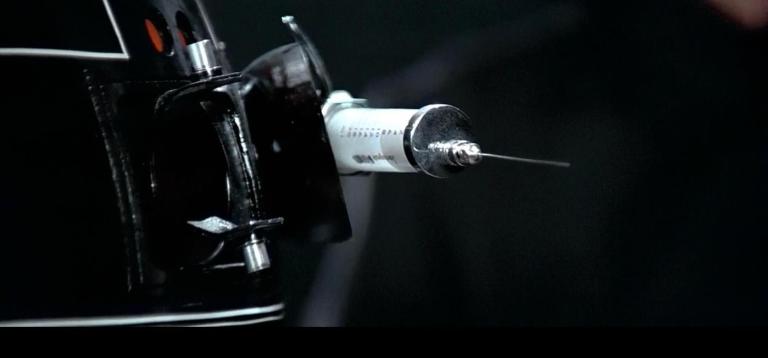
Star Wars is not exactly Saw, but torture plays a recurring role in the franchise. A fear of needles is all you need to shudder at the scene in A New Hope where Darth Vader visits the imprisoned Princess Leia in the company of a spherical torture droid, its syringe looking like one of the least sanitary things on the otherwise gleaming Death Star.
In the very next film, The Empire Strikes Back, Han Solo’s screams can be heard offscreen as he’s subjected to the shocks of an electric torture table. (“They never even asked me any questions,” says a bewildered Han, whose distress is merely a lure for his soft-hearted friend Luke.) One movie later, in Return of the Jedi, we’re introduced to the dungeon where Jabba the Hutt’s droids torture their own kind.
And that’s just the physical torture! The entire franchise is replete with psychological torture and manipulation up to and including Sith mind probes. “Give me everything,” says Supreme Leader Snoke in The Last Jedi, floating Rey above the floor just to emphasize the point that her mind and body belong, however temporarily, to him.
Falling

Nothing says “PG action movie” like a nice clean death by falling from a great height. Into a bottomless shaft, so viewers don’t see the impact? Even better.
Bottomless shafts have been a visual hallmark of the Star Wars saga since 1977. The Death Star shafts served for Stormtrooper disposal during A New Hope (Wilhelm Scream!), then gave Luke a Cloud City escape route in The Empire Strikes Back. Return of the Jedi had both a Death Star bottomless shaft (for the Emperor’s demise) and the Rancor pit on Tatooine (for Boba Fett’s seeming death, retconned into a mere nap by The Book of Boba Fett).

Bottomless shafts later popped up in the prequels (on Naboo, repository of both halves of Darth Maul) and sequels (on Starkiller Base, giving Han Solo a tragic but elegant out). All that falling sets up a nice sense of tension when characters manage not to fall, as in Ben Kenobi deactivating the tractor beam in the original Star Wars or Obi-Wan and Anakin leaping over a lava lake in Revenge of the Sith.
Choking
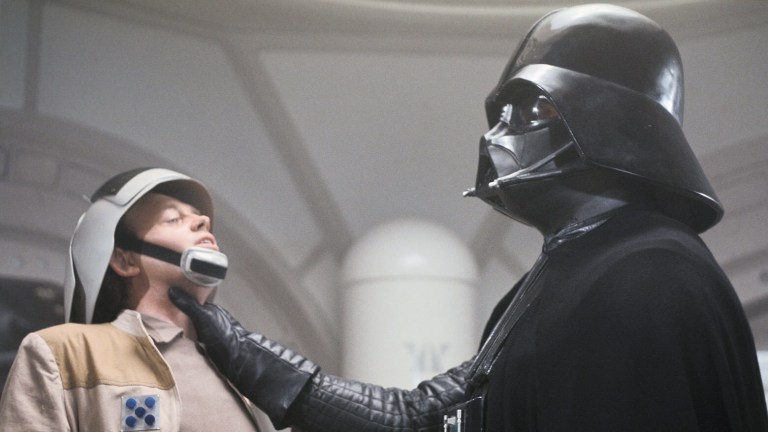
Darth Vader’s very first onscreen kill, just six minutes into A New Hope, is Captain Antilles of the Tantive IV, his neck broken by the Sith Lord. Vader takes a less hands-on approach later, choking Admiral Motti without bothering to cross the Death Star conference room. Though Motti gets a reprieve by order of Grand Moff Tarkin, the Force choke became well-established as a means of terror and a tell-tale sign of Dark Side dabbling.
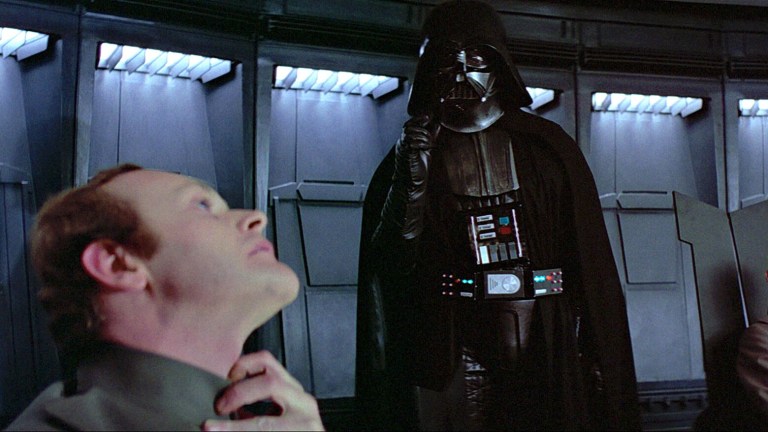
Vader’s strangling of disappointing underlings is a running joke in The Empire Strikes Back, the angry Sith Lord’s own ventilator-assisted breath suggesting a certain insecurity about oxygen flow. Lucas returned to the choking trope for a pivotal moment in Revenge of the Sith, when a pre-armor Vader chokes his own pregnant wife. Horrific!
Forced labor
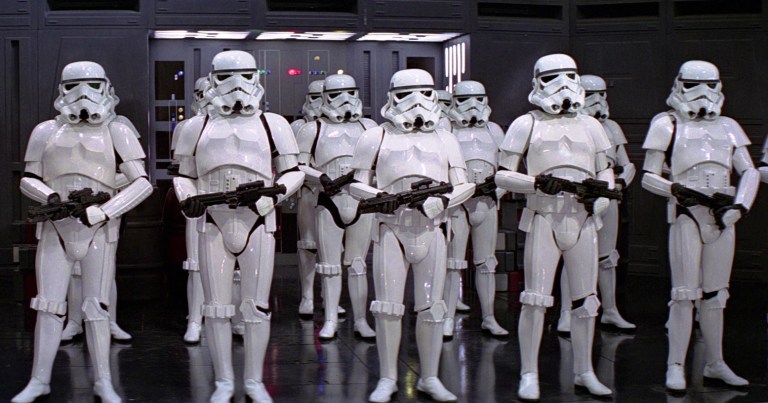
Star Wars characters are routinely subject to forced labor. While the original movies don’t include the outright slavery depicted extensively in later offerings like Solo: A Star Wars Story, we get the (canonically correct) impression that the Stormtroopers were conscripted against their will, and it’s certainly clear that dancing for Jabba was not a chosen occupation for Oola, the ill-fated Twi’lek in Return of the Jedi.
While the noble Jedi would never stoop to Vader-style choking, they have no compunctions about using the Force to manipulate the “weak-minded.” Obi-Wan Kenobi debuts this trick with a Stormtrooper in Episode IV, and his protege Luke flexes the skill with Bib Fortuna in Return of the Jedi before meeting his match in the thick-skinned Jabba.
Just as the Force choke is a rite of initiation for Sith Lords, so is the mind trick a coming-of-age ritual for Jedi — as demonstrated by Rey, astonished at her own power, in The Force Awakens. “And,” shrugs a First Order Stormtrooper played by Daniel Craig, “I’ll drop my weapon.”
Cloning
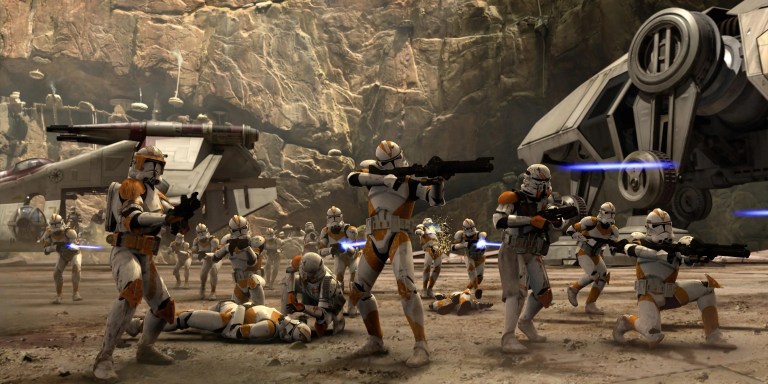
No one would mistake a Star Wars movie for Invasion of the Body Snatchers or The Thing, but the horror of cloning is a notable theme in the franchise.
The Clone Wars get name-dropped in the original movie, then are explored in vast detail in the prequel trilogy and the sprawling Clone Wars and Bad Batch animated series. The TV shows, with more time for supporting characters, dig into questions of identity and agency among the clones: all copies of Jango Fett, raised to fight without asking questions and embedded with inhibitor chips to ensure they’ll do the Emperor’s evil bidding when the stakes are highest.
Emperor Palpatine himself eventually experiments with cloning, which becomes a slightly silly subplot in the sequel trilogy but also provides a key motivation for the Imperial remnants to kidnap Baby Yoda — er, Grogu — in The Mandalorian. Dr. Pershing, the mad scientist who works his tender mercies on the little green guy, could have crossed over from a David Cronenberg movie.
Betrayal
From Jack in The Shining to Rose in Get Out, some of horror’s most fiendish villains have been people their victims trusted implicitly. There’s plenty of back-stabbing in the Star Wars franchise, especially in the prequel trilogy — which is entirely premised on a trusted politician’s secret scheming and the fall of a heroic Jedi Knight.
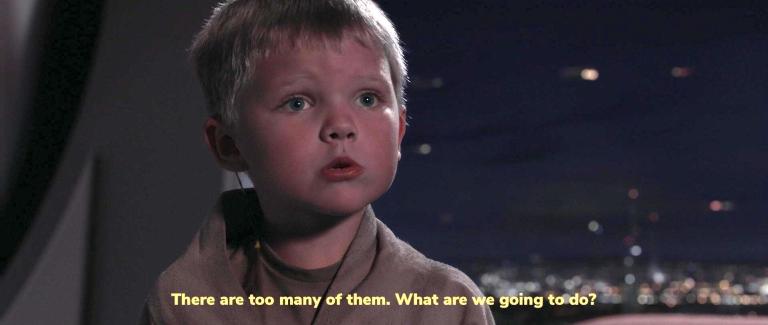
“Master Skywalker!” says a cherubic youngling, after the clone army turns against the Jedi in Revenge of the Sith. “There are too many of them! What are we going to do?” As Anakin ignites his lightsaber, it becomes clear the terrified kids won’t have long to worry.
The movies feature other betrayals that may be less definitive, but are just as juicy: notably Qi’ra in Solo: A Star Wars Story and Lando in The Empire Strikes Back. “I had no choice,” protests Han’s old friend as he opens the dining room door to reveal Darth Vader. “I’m sorry.”
“I’m sorry too,” replies Han, who’s hardly shocked at yet another friend jumping into bed with the enemy.
Threatened parental figures
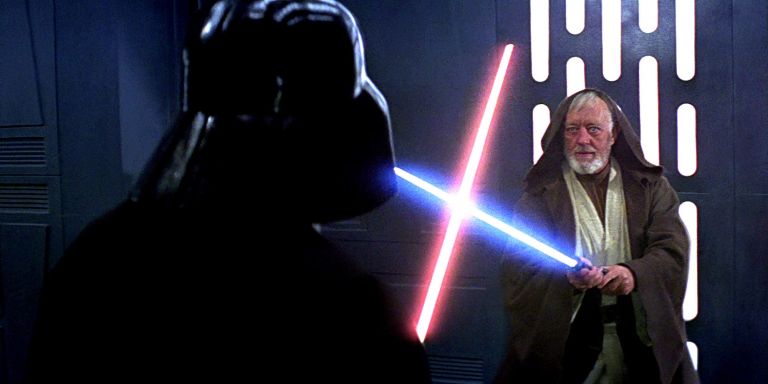
Off-camera youngling slaughter aside, children tend to do relatively well in Star Wars stories. That galaxy far, far away, however, is no country for old men. As soon as you become a parent or a mentor, the clock is ticking.
The trope begins with Luke Skywalker in the original movie: his parents are both dead (or so he’s told). Then his adoptive parents are incinerated by Stormtroopers, and his mentor Obi-Wan Kenobi is cut down in front of his eyes. Even Biggs Darklighter, a friend who’s something of a big brother figure to Luke, bites it before the movie’s over.
Meanwhile — in the very same movie! — Leia watches her adoptive parents blasted into oblivion along with her entire home planet. Grandparents? Aunts? Uncles? Teachers? Coaches? Babysitters? Toast.
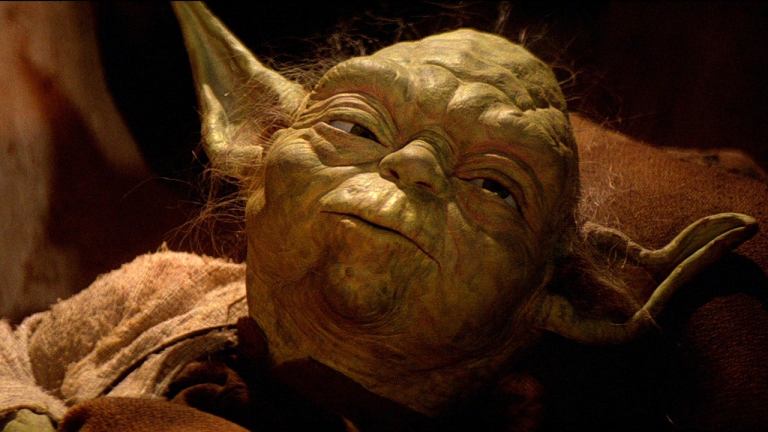
The elder carnage just adds up, movie after movie. Luke loses yet another mentor in Yoda (who dies peacefully, but in hiding at threat of execution by the Emperor). Luke and Leia’s biological father redeems himself, then dies anyway, in Return of the Jedi. In the prequels, we learn that Anakin’s own mother died in his arms after being abducted by Sandpeople, and his first Jedi master (Qui-Gon Jinn) was fatally jabbed by Darth Maul.
Need more examples? Jyn Erso’s parents die by violent means in Rogue One: A Star Wars Story. All three of the original trilogy’s stars become mentors to Rey, and then pay the predictable price, in the sequel trilogy. In classic Star Wars fashion, Rey’s already traumatized by the loss of her parents, and she ultimately has to kill her own grandfather.
For bonus trauma, check out the 1985 TV movie Ewoks: The Battle for Endor. Little Cindel loses her parents and older brother in an opening battle, leaving her to struggle for survival with the help of Wicket the Ewok and a grumpy guy played by Wilford Brimley. It’s a good thing for Brimley’s character there was never a follow-up film, because chances are it would not have gone well for him.
Further reading:
